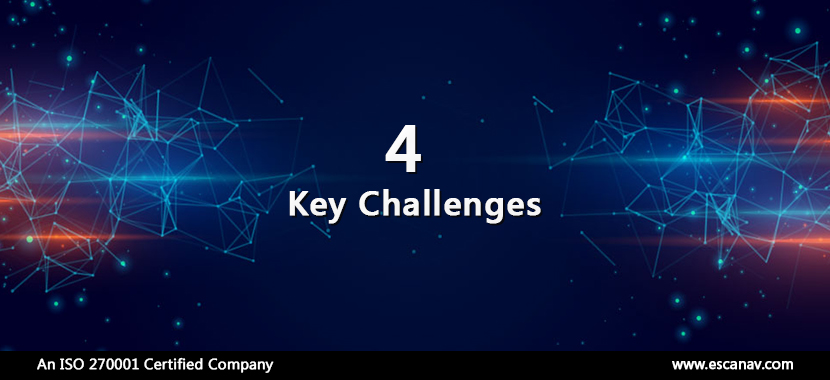Both enterprise and the end-user market are highly obsessed with the word cybersecurity, rather than actual security itself. Everything that promises security, in a simplified form or not, does not always deliver the way users need. This mindset needs to be challenged and changed; the enterprise and society need to understand that security cannot be an add-on. Security should be rather built on every system and into every product from the moment it is conceived.
In order to achieve such integration, the following four leadership challenges should be addressed and braved.
- Information sharing in real-time
The digital landscape is expanding exponentially, in order to keep up with this change, security professionals have to address threats and cybersecurity weaknesses before cybercriminals take advantage of it and strike. Speed is intrinsic to an effective cybersecurity strategy, Security systems need to keep up with increasing speed and volume of internet traffic. The speed of its reaction is crucial as well. More often than not, there are long lags in the time while responding to security issues. Criminals take advantage of the response time lag on the security incident. However, speed requires visibility. IT security has no borders and in a world that is interconnected digital technology, cybersecurity, and global security. No organization can have a complete view of the entire cyberspace, irrespective of the fact that they belong to the public or private sector. The senior leadership should ensure a steady sharing of information with leaders from other organizations as well, which would make sure there is an influx of new information that would help them foresee the big picture and create a strategy to deal with a potential cyberattack. - Collaboration is Cybersecurity
Effective IT security cannot be achieved by a singular effort; it has to be deeply and widely collaborative. Collaboration enables the creation of a hive of minds working against the venom of the cyberspace, by constantly learning and expanding, competency and capacity of efforts. If individuals, organizations, states, and nations don’t learn from the information shared by others, then they stand a high chance of falling prey to the same cyber-attacks, again and again.
Wide collaboration means, including everyone in a widespread conversation about IT security, while deep collaboration means making everyone smarter and creating knowledge archives that would be part of our operational systems. This would mean collaborating on threat intelligence sharing along with cybersecurity education and awareness.
Senior leaders should ensure that such collaboration is time well spent, since the more conversations they have on the importance of cybersecurity and its fundamental role, the more education is share and the more future generations of cybersecurity professionals would be nurtured. Working together could see tangible results being achieved at a faster rate. - A common vision for integrated cybersecurity
Leaders from the public and private sectors must commit to creating a common vision for integrated cybersecurity which is based on clearly defined fundamental principles. This vision must be comprehensive and inclusive, anticipating the next steps of cyber-criminals rather than solely reacting to them. The common vision must be operational and must look at how appropriately handle the technical challenges of effective cybersecurity. Cybersecurity should be a part of everyone’s educational awareness and development and its competencies should be embraced by every individual. - Promoting the platform to promote the lifestyle
There should be a change in the perception of cybersecurity across sectors that run on Information Technology. Since cybersecurity requires high levels of computing, most products that are used to form the IT infrastructure should be built with components that support the powerful computing required to assist with the advanced cybersecurity technology. This would form the larger vision of cybersecurity where all parts of the network participate together is security driven networking, which challenges and changes the traditional assumptions of networking. An integrated platform might not be as perfect as perceived but it shall be a start on which security leaders from across the world can build upon. Through this common platform, product manufacturers could be educated on the need to build cybersecurity into their products. In some cases, the product might need to be refreshed or in the best-case scenario, it could change the whole ecosystem of the way these products are designed. To encourage and breed trust we should widely accept standards and protocols with public discussions on the topic.
The path ahead
In an atmosphere that permeates a lack of trust and poor cooperation between industry leaders, the only people who enjoy benefits are the cybercriminals. Given the above four challenges are braved and true integration is achieved across national and geographical borders, also within businesses, that cybersecurity will achieve its full potential of creating a truly protected world.
To read more, please check eScan Blog







